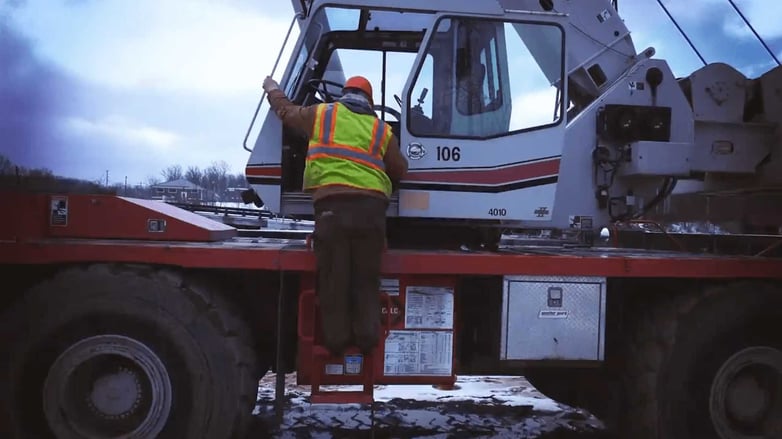
Approximately every 11 minutes, someone in the US dies by suicide. About 50% of people in the US know someone who has died by suicide in their lifetime. The number of people who tried to commit suicide or thought about it is even higher.
According to the Centers for Disease Control and Prevention, the construction industry has the greatest suicide rate when compared to other professions. Its rate of suicide is about four times higher than the national average and shows construction workers are more likely to die of their own hands than in a work-related accident.
That statistic is staggering enough on its own, but it doesn’t tell the whole story. The number of suicides in the construction industry is likely higher than reported, due to the industry’s transient workforce and the fact that many suicides go unreported.
The construction industry has always been a high-risk, high-stress profession. The work is demanding, both physically and mentally. Construction workers are constantly under pressure to meet deadlines, and the job often requires long hours, early mornings, and working weekends.
All of these factors can take a toll on a person’s mental health. When combined with other risk factors for suicide, such as substance abuse and financial difficulties, they can easily create a worst-case scenario.
The nature of construction work
If there's one thing that's true about construction, it's that there is no substitute for hard work. Whether you're building houses, bridges, or roads, you have to get down to it. Every construction worker knows you have to do as much as possible today to make tomorrow easier, and there is no way around it.
That can be tough on the body and mind. The physical labor is grueling, and the mental stress of managing a construction site can be overwhelming. There are often specific times to enter a work site but no specific time to leave.
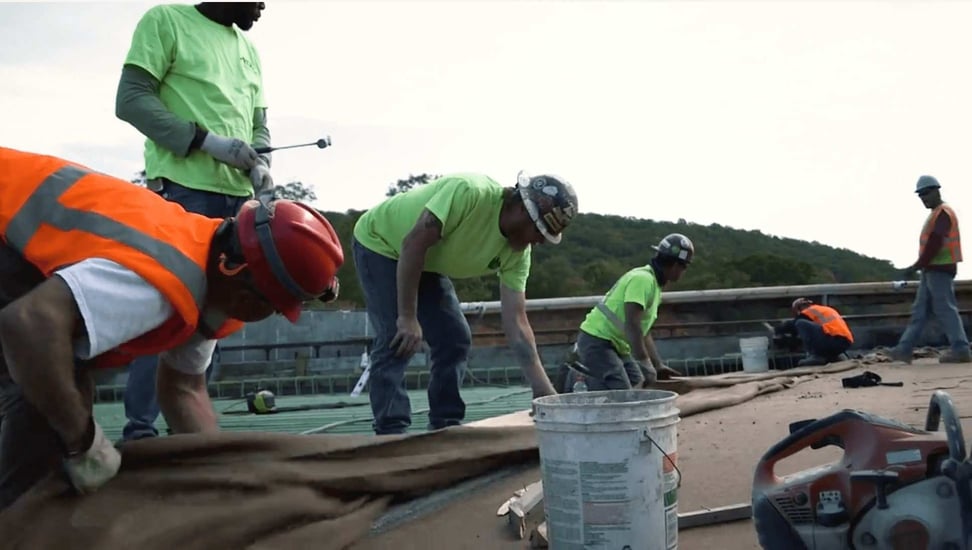
The lack of a fixed schedule often leads to long hours, and workers may find themselves working late into the night or over the weekend to get the job done and make up for the lost time. Poor weather conditions, construction delays, injuries, competitive work culture, and other unforeseen circumstances can add to the pressure.
While the construction work can be gratifying, it's important to understand the toll it can take on a person's mental and physical health. And when workers don't have the opportunity to take breaks, or they're not using proper safety precautions, the risks are even greater.
Impacts of construction work on mental health
When we think of job site hazards, the first thing that comes to mind is the physical risks: falling from a height, being struck by an object, or electrocution. While these are all genuine dangers that construction workers face every day, there is another hazard that is often overlooked: the mental health risk.
Working in construction can have a significant impact on your mental health. Physical labor, the stress of meeting deadlines, and the constant pressure to perform can lead to anxiety, depression, and suicidal thoughts. Unfortunately, we can't mitigate these with a hard hat or caution tape.
According to research from the Construction Industry Rehabilitation Plan (CIRP) Foundation, 83% of construction workers experience mental health issues. The study also showed high undiagnosed post-traumatic stress disorder (PTSD) rates.
These numbers show that, of the people you work with daily on the job site, more than four out of five are likely struggling with their mental health - and you may not even know it.
Or, maybe it's you.
Mental health problems don't discriminate. Anyone from management to the newest apprentice can be affected, and your job site is not an exception.
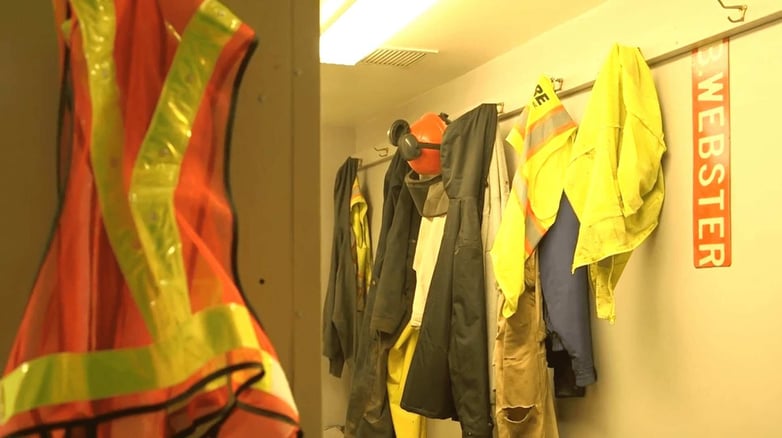
The construction industry and suicide
Unfortunately, the mental health risks in construction can often have very real and tragic consequences. Suicide is a leading cause of death among construction workers, and the rate is rising.
The Centers for Disease Control and Prevention (CDC) conducted a report on suicide deaths based on industry and occupation. According to the report, the construction industry had one of the highest rates of suicide among its workers, along with mining, quarrying, and oil and gas extraction workers. CDC also calculated the suicide rates for six major occupational groups, placing construction and extraction occupations in the highest risk group.
With 53.2 suicides per 100,000 workers, the alarming rate in construction is four times higher than the national average. And while most suicide victims are middle-aged men, the CDC reports that the rate of suicide among construction workers aged 20-24 has increased significantly in recent years.
Suicide doesn't just impact the individual - it also takes a toll on their families, friends, and co-workers. The ripple effects can be devastating, and it's something we need to start talking about more openly in the construction industry.
Construction's unique risks
A unique combination of factors puts construction workers at a higher risk for suicide. Prior to the COVID-19 pandemic, construction workers were already more likely to experience job insecurity, long work hours, and financial instability.
The pandemic has only made these risks worse. With construction sites shutting down across the country, many workers have lost their jobs or been put on furlough. With the added risk of exposure to the virus, construction workers faced even more uncertainty and stress.
It's important to point out that the pandemic is not the only factor putting construction workers at risk. The industry was struggling with a mental health crisis long before COVID-19 hit. Let's take a closer look at some of the unique dangers that construction workers face:
A culture of silence
Construction is a male-dominated industry, and there is a lot of pressure to be tough and to suck it up when things get hard. It encourages a tough-guy attitude and a culture of silence, making it difficult for workers to reach out for help. A stigma of weakness surrounds mental health, and many workers are afraid to speak up for fear of being labeled weak or incompetent.
Construction sites don't always encourage diversity, either. Sometimes good-natured banter can turn into bullying, and workers may not feel comfortable speaking up if they're the target of teasing or jokes that turn sour. This can further isolate them and make them feel like they can't turn to their co-workers for support.
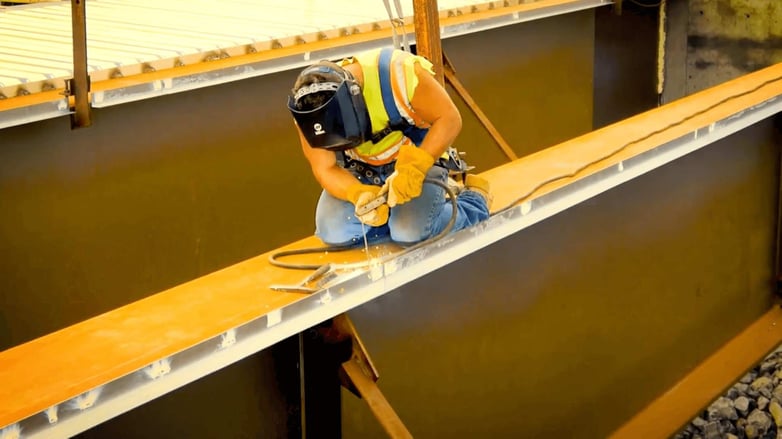
A feeling of disconnectedness
According to the Construction Industry Alliance for Suicide Prevention (CIASP), one of the most significant risk factors for suicide is a feeling of disconnectedness. Due to the nature of the work, construction workers are often transient, moving from job site to job site. This can make it difficult to develop lasting relationships and a sense of community.
In addition, workers may feel a disconnected from their families and friends due to the long hours and time spent away from home. This can also lead to feelings of isolation and loneliness, which can be a major risk factor for suicide.
Moving from site to site, losing touch with friends and family, and staying out of the home base for long periods, combined with a lack of sleep and the physical demands of the job, all contribute to the risk of developing anxiety and depression. Add to that the stress of dealing with job insecurity, financial instability, and the pandemic, and it's clear that construction workers are facing many risk factors for mental health problems.
Painkillers and injuries
Construction workers are more likely to be injured on the job than in any other industry. Often, those injuries turn into chronic pain, for which workers may turn to prescription painkillers.
A 2018 study from the Workers Compensation Research Institute shows that mining and construction workers were more likely than workers in other industries to receive opioids when receiving a prescription for pain medication. This also means they are more likely to become addicted to painkillers and, as a result, potentially experience depression and anxiety.
The size of the workplace is another factor in prescribing opioids. Smaller workplaces are more likely to prescribe opioids than larger ones, which may be due to the fact that smaller ones have less access to alternative forms of pain management and quality health care.
Drug and alcohol abuse
Though alcohol is a depressant, many people turn to drinking to cope with stress and anxiety. They often say it helps them relax or increase their energy levels. But alcohol is a short-term solution that can ultimately make anxiety and depression worse.
An average drinker usually feels relaxed after a drink or two. But alcoholics feel stimulated and can often perform better when they're a few drinks in. Their bodies have become used to the alcohol and no longer react to it the same way. Even though they may feel like they're performing better, in the long run, the depressant effects of alcohol will take over and can lead to severe physical and mental health problems.
In addition to alcohol, some workers turn to drugs, such as cocaine or meth, to cope with the job demands. There is no need to explain the dangers of drug abuse but suffice it to say that it can lead to serious mental and physical health problems or even death.
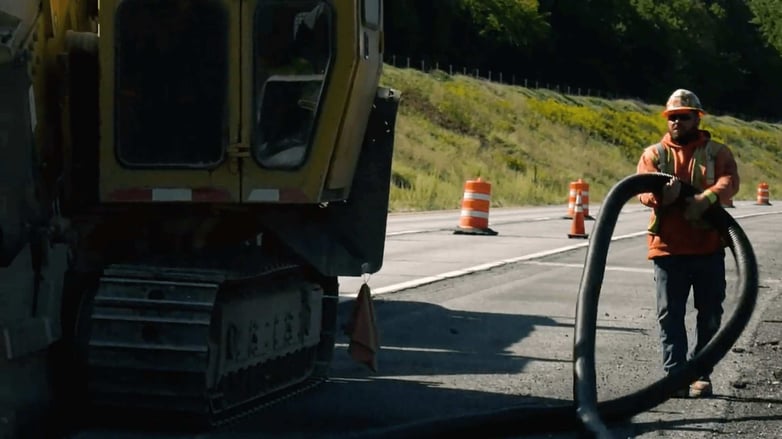
What can we do to prevent suicide in the construction industry?
While the construction industry has made some progress in addressing mental health issues and suicide prevention, there is still more that can be done. Here are some suggestions:
Pay attention and be aware of the warning signs
While prevention is always better than cure, in the case of suicide, prevention is the only option.
Unfortunately, preventing what we cannot see coming is often challenging. But, there are some warning signs that we can look out for. If you are worried about someone, here are some things to pay attention to:
- A change in behavior – they may become more withdrawn, agitated, or start taking more risks.
- A change in appearance – they may start neglecting their hygiene or wear clothes that are inappropriate for the job.
- A change in work performance – they may make more mistakes, take longer to complete tasks or start calling in sick more often.
- A change in mood – they may seem more depressed, anxious, or angry.
- Segregation from the group - they may start eating lunch alone or spending less time socializing with co-workers.
- Signs of substance abuse - they may start drinking more, using drugs, or exhibiting signs of intoxication while at work.
If you notice any of these changes in someone you know, don't be afraid to reach out and ask if they're okay. Sometimes, just knowing that someone cares can make all the difference.
Educate yourself, your new hires, and your team
Mental wellness and suicide are often taboo subjects. People are reluctant to talk about it, even when they’re struggling. This is why educating yourself, your new hires, and your team is important. The more informed people are, the more likely they will recognize the warning signs and seek help.
There are many resources available online and in print that can help you learn more about mental health and suicide prevention. The Construction Industry Alliance for Suicide Prevention (CIASP) is a good place to start. CIASP is a national organization that provides resources, training, and support to those in the construction industry who are struggling with mental health and suicide.
Address job-related stressors
Another way to work on suicide prevention is to address the job-related stressors that can trigger it or contribute to mental health problems. Some of the most common stressors include:
- Working long hours
- Working in dangerous or high-pressure situations
- Dealing with demanding customers or clients
- Having a heavy workload
- Not having enough time off
- Lack of job security
- Poor working conditions
If you're a construction worker, try to take some time each day to relax and de-stress. And if you're a construction manager, ensure you're creating a healthy work environment for your team. This means providing adequate breaks, ensuring safety protocols are being followed, and addressing any concerns that employees may have.
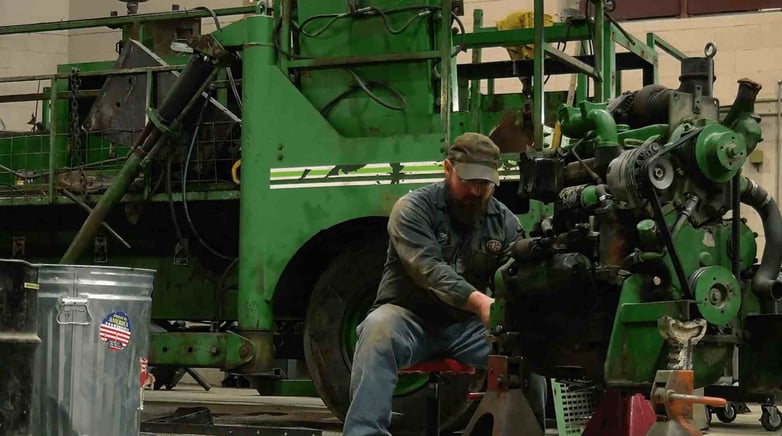
Create a safe environment
A safe environment doesn't always include personal protective equipment, traffic control, or other physical safety measures. It also includes psychological safety. Psychological safety is about feeling comfortable enough to speak up when something isn't right. It's about feeling like you won't be ridiculed, punished, or ignored if you speak up.
Creating a safe environment starts with all of us. We can achieve it by:
- Educating ourselves and others about mental health and suicide prevention
- Being open and honest about our mental health
- Creating an environment where people feel comfortable talking about their mental health
- Encouraging people to seek help when they're struggling
- Listening without judgment
- Respecting people's privacy and confidentiality
If we can all work together to create a safe environment, we can make a real difference in the lives of those who are struggling.
Create a suicide prevention plan
A suicide prevention plan is a written set of instructions that outlines what to do if you or someone you know is struggling with suicidal thoughts or behaviors. If you're a construction manager, it's a good idea to create a suicide prevention plan for your workplace that includes the following:
- A list of warning signs to look out for, as mentioned above
- Coping strategies and emergency contacts
- A list of resources (e.g., helplines, counseling services, employee assistance programs)
- A procedure for what to do if someone is showing warning signs
- A process for what to do if someone attempts suicide
- A plan for follow-up after a suicide attempt or suicide
A plan can help ensure everyone knows what to do if someone is struggling. It can provide a sense of comfort and security in knowing that there is a plan in place to help keep people safe.
Foster a culture of open communication
Feeling connected to the community, having a solid social support network, and feeling like you belong are all crucial factors in suicide prevention. One of the best ways to foster a sense of connection and belonging is to create a culture of open communication.
This means creating an environment where people feel comfortable discussing their mental health, struggles, and feelings. We can create a culture of open communication by:
- creating around-the-clock clear communication channels
- scheduling one-on-one meetings
- introducing anonymous surveys
- holding regular team meetings
- having informal social outings
- keeping employees updated on the strategic direction of the organization.
While construction industry workers are often seen as tough and stoic, we must remember that we're all human. We all have our unique struggles and experiences. And we all need to feel like we belong somewhere.
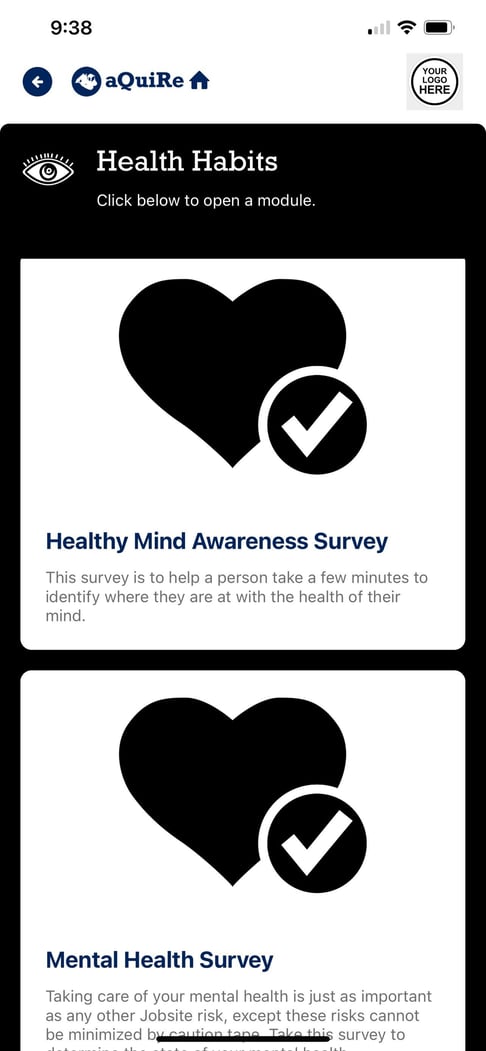
Eliminate the stigma
Depression, suicidal thoughts, addiction, and other mental health conditions often present life-long challenges. One of the goals of this article is to help eliminate the stigma around mental wellness and normalize talking about struggles with mental health.
It's time to eliminate the shame and secrecy that surround mental health. Seeing a therapist or counselor should be seen as no different than going to the doctor for a physical ailment. Taking medication for depression or anxiety should be seen as no different than taking medication for high blood pressure.
If we can eliminate the stigma, we can make it easier for people to seek help when struggling. We can make it easier for people to talk about their mental health. And we can make it easier for people to get the help they need.
Conclusion
Mental health is a complex issue, and there is no one-size-fits-all solution to suicide prevention. However, we can make a difference by educating ourselves, being open and honest about our struggles, and creating a culture of open communication. We can create a safe environment for everyone. And we can save lives.
If you or someone you know is struggling with suicidal thoughts or behaviors, please reach out for help. You are not alone.
Resources for suicide prevention in the construction industry
National Suicide Prevention Lifeline: 988 has been designated as the new three-digit dialing code that will route callers to the National Suicide Prevention Lifeline. While some areas may currently be able to connect to Lifeline by dialing 988, this dialing code will be available to everyone across the United States starting on July 16, 2022.
The National Suicide Prevention Lifeline is available 24 hours a day, 7 days a week, 365 days a year.
- Para español: Línea de Prevención del Suicidio y Crisis 988
- Options For Deaf + Hard of Hearing: For TTY Users: Use your preferred relay service or dial 711 then 988.
- Online chat: https://988lifeline.org/chat/?_ga=2.253406409.1167518757.1662126687-348659973.1662126687
Veterans Crisis Line: For Veterans, active duty members of the military, or those concerned about one; 24/7 services
- Call: 988 then press 1
- Text: 838255
- Online chat: https://www.veteranscrisisline.net/get-help-now/chat/
- Website: https://www.veteranscrisisline.net
Substance Abuse and Mental Health Hotline (SAMHSA’s National Helpline): 24/7 information service for individuals and family members facing mental and/or substance use disorders.
- Call: 1-800-662-HELP (4357)
- For TTY users: 1-800-487-4889
- Website: https://www.samhsa.gov/find-help/national-helpline
Alcoholics Anonymous (AA): AA is a fellowship of men and women who share their experience, strength, and hope to help others recover from alcoholism. Access multilingual online meetings or connect with someone who can help with your drinking problem.
- Online meetings: https://aa-intergroup.org
- Find local A.A. resources: www.aa.org
Narcotics Anonymous (NA): If you think you have a problem with drugs, NA can help. Find meetings and helplines in your community.
- Website: www.na.org/meetingsearch
- Crisis Text Line: Crisis Text Line serves anyone in any type of crisis, providing access to free, 24/7 support. Text HOME to 741741 from anywhere in the United States, anytime.



